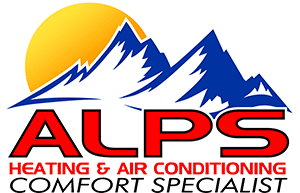Tips for maximum Efficiency and Comfort
Are you getting the most for your comfort dollar?
Whether your comfort system is old or new, in a new or old home, in an apartment of single-family home, there are many little things you can do to optimize it’s efficiency and mimimize your utility bills. They’re all definitely worth the small amount of time and expense they take, because in the long run, they’ll save you money.
Outside the Home
Regardless of the season, you want to keep your comfortable air inside your home. And that means minimizing air that’s getting out as well as air that’s making it’s way in.
- Caulk and Weather Strip—around doors, windows, chimneys & flues, and anywhere else inside that air can escape. Also check for cracked or broken roofing shingles, crumbling grout and worn or torn vapor barriers too.
- Inspect the exterior of your home. Do this once or twice a year to ensure against inefficiencies.
- Install insulated windows and doors. If you’re building a new home or in the process of a remodel, invest in vinyl or wood clad insulated (thermopane) windows and/or storm windows and doors.
- Vegetation and Debris—Keep your outdoor condenser unit free of vegetation and debris. Plants and other items cluttered around the a/c unit can block air flor which forces the system to work harder to produce the same level of comfort. Cleaning up around the unit will save you a ton on operating costs as well as what could be premature failure and costly replacement
- Vegetation as insulation—Planting trees and large shrubs around your home can help to keep it cooler in summer and warmer in winter. Since you’ll also need to be concerned about root systems and their growth as well as leaves and pests, it’s best to consult a local landscape contractor or reputable garden center for help with selection and lpanting location
Inside the Home
- Determine a comfortable temperature. Once you’ve decided upon a comfortable temperature for you and your family, set the thermostat at the highest comfortable level in the summer and the lowest comfortable level in the winter. A change as small as 1 degree can lower your energy useage by as 4%! That can add up to a huge difference in annual cooling an heating costs!
- Programmable thermostat— A programmable thermostat is ideal for people who are away from home during set periods of time throughout the week. Through proper use of pre-programmed settings, a programmable thermostat can save you about $180 every year in energy costs. Think about your schedule and how often you are away from home for regular periods of time—work, school, other activities—and then decide what temperature you like it when you are home. When you are away, it is recommended that your thermostat be set up or back 7-10 degrees from the usual set point.
- Lights are a source of heat. Replacing incandescent bulbs with compact fluorescents can reduce the amount of heat produced by your lights. Plus they use considerably less energy and last longer. This type of bulb is now available for most lights and using them along with dimming switches can produce even more savings
- Using drapes and blinds for improved insulation—In summer, keeping the drapes or blinds closed on the sunny side of the house can help to keep indoor temperatures a little cooler. In winter, you’ll want to open them to take advantage of the sunlight warmth during the day and close them up again at night to lock in the warmth.
- Insulation in the home—Insulating attics, walls, and crawl spaces to the maximum r values will help cut your annual cooling and heating costs TREMENDOUSLY. Insulating ductwork in your attic will also make a huge difference.
- Fireplace equipment—Using a gas fireplace or adding a glass door to a wood-burning fireplace can help maximize energy efficiency. Keep the damper closed whenever you’re not using the fireplace. Be sure to check with the manufacturer’s recommendations to ensure safety isn’t compromised.
- Time-of-day utility pricing. Some electric companies offer time-of-day pricing which is reduced pricing for complying with performing household tasks during the coolest part of the day to reduce pressure on the local grid.
HVAC System Maintenance
- Check your filters regularly and clean or replace them when needed. Your Alps Comfort Technician can make recommendations based on the manufacturer details and local air quality conditions.
- Ensure proper ducting. Have your ducts tested to make sure they aren’t leaky. You don’t want to be paying to heat or cool your attic. Also, make sure your ducts are sized and designed properly to deliver the right amount of air where you need it. A balanced duct design will ensure that every room is kept at the same temperature when your system is running.
- Don’t close your vents! Closing off vents will actually make the system work harder and could cause majore damage to the system. Make sure noe supply or return vents are blocked by furniture or other objects like window coverings.
- Zoned systems—If your home is a multi-story or large single story, consider installing a multi-zone HVAC system along with multiple programmable thermostats to save energy.
Now that your home is more energy efficient, sit back, relax, and enjoy your year-round total comfort!

